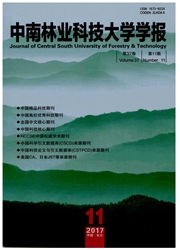

 中文摘要:
中文摘要:
杉木是我国南方重要的用材林树种,但其分子标记开发滞后于其他树种。文章利用种(属、科)间扩增法,从来源于黑松、日本柳杉等的21个叶绿体微卫星(SSR)位点中为杉木筛选适合的标记。结果表明:候选标记位点中有10个能够成功扩增,其中2个位点(CJCP1m_004和CJCP2m_002)具有多态性,其单倍型数量(A)分别为2和6,多样性指数(H)为0.233和0.733。多态性位点的单倍型序列分析结果表明,源于日本柳杉的CJCP2m_002在杉木中属高变异位点,其SSR重复单元类型为(AT)n..(T)n,不同于来源物种的重复单元类型(AT)n。筛选得到的叶绿体微卫星(SSR)标记在杉木分子遗传学研究中具有重要用途。
 英文摘要:
英文摘要:
Chinese fir (Cunninghamia lanceolata) is a very important plantation species that is mainly distributed in Southern China. However, the genomic analyses of C. lanceolata have lagged significantly behind those of other conifer species due to a lack of suitable markers. Using the method of cross-species amplification, twenty one candidate cp-SSR markers from Pinus thunbergii and Cryptomeria japonica were examined to select polymorphic loci for Chinese fir. The genotyping results show that, of candidate marker loci, ten loci had been successfully amplified within PCR bands, and of the ten, 2 loci (CJCP1m_004, CJCP2m_002) were polymorphism, theirs numbers of haplotypes per locus were 2 and 6 tested in 16 individuals and theirs genetic indexes were 0.233 and 0.733, respectively. The analysis of sequencing results suggested that the motifs [(AT)n(T)n] of locus CJCP2m_002 differed greatly from original species (C. japonica). CJCP2m_002 was the high variation locus in Chinese fir. These cp-SSR markers will be useful in future genetic analyses of C. lanceolata and related species.
 同期刊论文项目
同期刊论文项目
 同项目期刊论文
同项目期刊论文
 期刊信息
期刊信息
